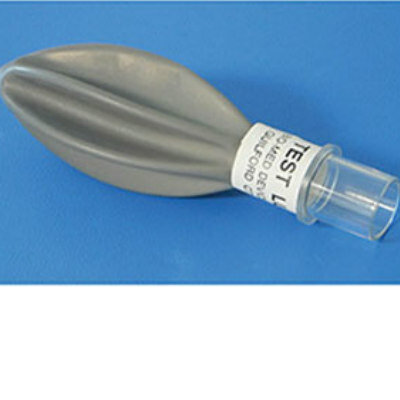Adding Artificial Intelligence (AI) System to Breast Ultrasound Can Reduce Unnecessary Biopsies, Finds Study
|
By HospiMedica International staff writers Posted on 11 Mar 2021 |

Illustration
A new study has determined that artificial intelligence (AI) can be an adjunct tool for breast ultrasound to reduce excessive lesion biopsy.
Researchers at Peking University Third Hospital (Beijing, China) conducted a study to determine whether adding an AI system to breast ultrasound can reduce unnecessary biopsies. In the study, conventional ultrasound and AI analyses were prospectively performed on 173 suspicious breast lesions before ultrasound-guided core needle biopsy or vacuum-assisted excision. Conventional ultrasound images were retrospectively reviewed according to the BI-RADS 2013 lexicon and categories. Two downgrading stratifications based on AI assessments were manually used to downgrade the BI-RADS category 4A lesions to category 3. Stratification A was used to downgrade if the assessments of both orthogonal sections of a lesion from AI were possibly benign. Stratification B was used to downgrade if the assessment of any of the orthogonal sections was possibly benign. The effects of AI-based diagnosis on lesions to reduce unnecessary biopsy were analyzed using histopathological results as reference standards.
The researchers found that 43 lesions diagnosed as BI-RADS category 4A by conventional ultrasound received AI-based hypothetical downgrading. While downgrading with stratification A, 14 biopsies were correctly avoided. The biopsy rate for BI-RADS category 4A lesions decreased from 100% to 67.4% (P < 0.001). While downgrading with stratification B, 27 biopsies could be avoided with two malignancies missed, and the biopsy rate decreased to 37.2% (P < 0.05, compared with conventional ultrasound and stratification A). Based on their findings, the researchers concluded that adding an AI system to breast ultrasound could reduce unnecessary lesion biopsies and have recommended downgrading stratification A for its lower misdiagnosis rate.
Related Links:
Peking University Third Hospital
Researchers at Peking University Third Hospital (Beijing, China) conducted a study to determine whether adding an AI system to breast ultrasound can reduce unnecessary biopsies. In the study, conventional ultrasound and AI analyses were prospectively performed on 173 suspicious breast lesions before ultrasound-guided core needle biopsy or vacuum-assisted excision. Conventional ultrasound images were retrospectively reviewed according to the BI-RADS 2013 lexicon and categories. Two downgrading stratifications based on AI assessments were manually used to downgrade the BI-RADS category 4A lesions to category 3. Stratification A was used to downgrade if the assessments of both orthogonal sections of a lesion from AI were possibly benign. Stratification B was used to downgrade if the assessment of any of the orthogonal sections was possibly benign. The effects of AI-based diagnosis on lesions to reduce unnecessary biopsy were analyzed using histopathological results as reference standards.
The researchers found that 43 lesions diagnosed as BI-RADS category 4A by conventional ultrasound received AI-based hypothetical downgrading. While downgrading with stratification A, 14 biopsies were correctly avoided. The biopsy rate for BI-RADS category 4A lesions decreased from 100% to 67.4% (P < 0.001). While downgrading with stratification B, 27 biopsies could be avoided with two malignancies missed, and the biopsy rate decreased to 37.2% (P < 0.05, compared with conventional ultrasound and stratification A). Based on their findings, the researchers concluded that adding an AI system to breast ultrasound could reduce unnecessary lesion biopsies and have recommended downgrading stratification A for its lower misdiagnosis rate.
Related Links:
Peking University Third Hospital
Latest AI News
Channels
Critical Care
view channel
Wearable Patch for Early Skin Cancer Detection to Reduce Unnecessary Biopsies
Skin cancer remains one of the most dangerous and common cancers worldwide, with early detection crucial for improving survival rates. Traditional diagnostic methods—visual inspections, imaging, and biopsies—can... Read more
Pulse Oximeter Index Offers Non-Invasive Guides for Fluid Therapy
In patients with acute circulatory failure, deciding whether to administer intravenous fluids is often a life-or-death decision. Too little fluid can leave organs underperfused, while too much can cause... Read moreSurgical Techniques
view channel
Robotic Assistant Delivers Ultra-Precision Injections with Rapid Setup Times
Age-related macular degeneration (AMD) is a leading cause of blindness worldwide, affecting nearly 200 million people, a figure expected to rise to 280 million by 2040. Current treatment involves doctors... Read more
Minimally Invasive Endoscopic Surgery Improves Severe Stroke Outcomes
Intracerebral hemorrhage, a type of stroke caused by bleeding deep within the brain, remains one of the most challenging neurological emergencies to treat. Accounting for about 15% of all strokes, it carries... Read morePatient Care
view channel
Revolutionary Automatic IV-Line Flushing Device to Enhance Infusion Care
More than 80% of in-hospital patients receive intravenous (IV) therapy. Every dose of IV medicine delivered in a small volume (<250 mL) infusion bag should be followed by subsequent flushing to ensure... Read more
VR Training Tool Combats Contamination of Portable Medical Equipment
Healthcare-associated infections (HAIs) impact one in every 31 patients, cause nearly 100,000 deaths each year, and cost USD 28.4 billion in direct medical expenses. Notably, up to 75% of these infections... Read more
Portable Biosensor Platform to Reduce Hospital-Acquired Infections
Approximately 4 million patients in the European Union acquire healthcare-associated infections (HAIs) or nosocomial infections each year, with around 37,000 deaths directly resulting from these infections,... Read moreFirst-Of-Its-Kind Portable Germicidal Light Technology Disinfects High-Touch Clinical Surfaces in Seconds
Reducing healthcare-acquired infections (HAIs) remains a pressing issue within global healthcare systems. In the United States alone, 1.7 million patients contract HAIs annually, leading to approximately... Read moreHealth IT
view channel
Printable Molecule-Selective Nanoparticles Enable Mass Production of Wearable Biosensors
The future of medicine is likely to focus on the personalization of healthcare—understanding exactly what an individual requires and delivering the appropriate combination of nutrients, metabolites, and... Read moreBusiness
view channel
Philips and Masimo Partner to Advance Patient Monitoring Measurement Technologies
Royal Philips (Amsterdam, Netherlands) and Masimo (Irvine, California, USA) have renewed their multi-year strategic collaboration, combining Philips’ expertise in patient monitoring with Masimo’s noninvasive... Read more
B. Braun Acquires Digital Microsurgery Company True Digital Surgery
The high-end microsurgery market in neurosurgery, spine, and ENT is undergoing a significant transformation. Traditional analog microscopes are giving way to digital exoscopes, which provide improved visualization,... Read more
CMEF 2025 to Promote Holistic and High-Quality Development of Medical and Health Industry
The 92nd China International Medical Equipment Fair (CMEF 2025) Autumn Exhibition is scheduled to be held from September 26 to 29 at the China Import and Export Fair Complex (Canton Fair Complex) in Guangzhou.... Read more
















